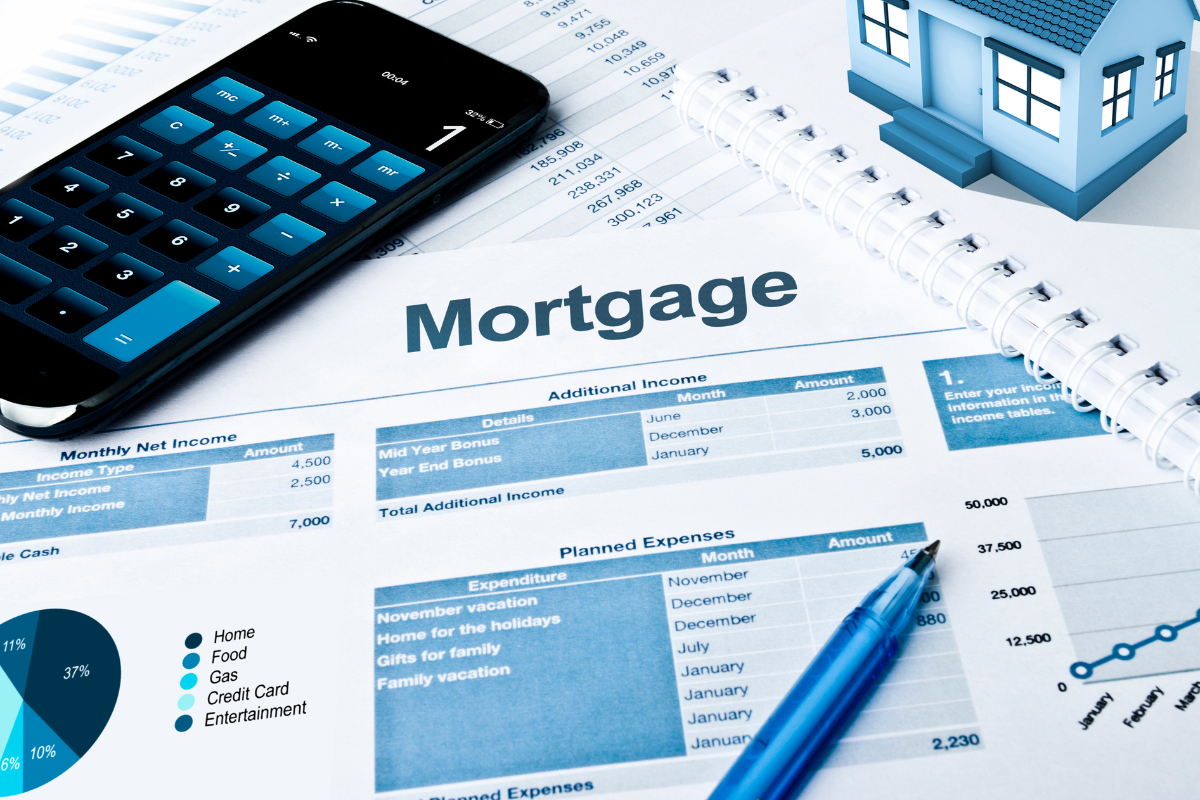Opting for mortgage refinancing presents an opportunity to reconfigure your financial circumstances and realize long-term savings.
A key aspect of making the most of this opportunity is obtaining the best mortgage refinance rates.
In this guide, we’ll walk you through the steps to help you secure the most favorable rates for your mortgage refinance.
Post Contents
What Is A Mortgage Refinance Rate?
A mortgage refinance rate refers to the interest rate that a lender offers when you decide to refinance your existing mortgage.
When you refinance, you replace the current mortgage with a new loan, often with different terms and conditions.
This new loan comes with its own interest rate, which can be the same as or different from your original mortgage rate.
The mortgage refinance rate is a crucial factor in establishing your monthly mortgage payments and the overall cost of the loan.
A lower refinance rate can reduce monthly payments, freeing funds for other savings and expenses.
Additionally, obtaining a lower rate through refinancing can result in significant long-term savings, as you’ll be paying less interest over the life of the loan.

Factors That Influence Mortgage Refinance Rates
Mortgage refinance rates are influenced by various factors that reflect the broader economic landscape and your financial situation.
Understanding these factors helps you make better decisions when refinancing your mortgage.
Here are the key elements that influence mortgage refinance rates:
- Market interest rates: Lenders typically base their rates on benchmark interest rates, such as the Federal Funds Rate set by the Federal Reserve. Refinance rates are also likely to increase when market rates rise, and vice versa
- Economic conditions: The state of the economy plays a role. Rates may rise during economic growth and stability and decrease during uncertainty or recession
- Credit score: A higher credit score often leads to better rates, reflecting lower credit risk and responsible financial behavior
- Loan-to-value ratio (LTV): More equity (lower LTV) can lead to improved rates as it reduces lender risk
- Loan term: The loan term’s length also affects refinance rates. Generally, shorter-term loans (e.g., 15-year fixed-rate mortgages) tend to have lower rates than longer-term loans (e.g., 30-year fixed-rate mortgages). That’s because shorter-term loans present less risk for lenders
- Type of loan: The type of loan you’re refinancing can impact the rates offered. Fixed-rate mortgages typically have stable rates over the loan’s life. In contrast, adjustable-rate mortgages (ARMs) can provide lower initial rates that adjust periodically based on market conditions
- Debt-to-income ratio (DTI): A lower DTI ratio signifies better financial stability and may lead to improved rates
- Property type and use: Different property types (e.g., primary residence, investment property) and intended uses (e.g., vacation home) can impact refinance rates. Lenders may offer slightly different rates based on the perceived risk of different property scenarios
- Location: Local factors, including housing markets and the economy, may influence rates
- Lender policies and competition: Different lenders have unique policies and competitive strategies affecting their rates. Comparing offers is key to finding the best rate
6 Steps To Obtaining the Best Mortgage Refinance Rates
Here are the six essential steps to help you secure the best mortgage refinance rates.
Step 1. Review Your Credit Report
In a study by the Federal Trade Commission, five percent of consumers found errors on their credit reports that might affect their credit scores—some of which could lead to less favorable loan terms.
Therefore, start by reviewing your credit report from all three major credit bureaus—Equifax, Experian, and TransUnion.
Correct any errors or discrepancies you find. Pay down existing debts, make payments on time, and avoid opening new lines of credit.
A higher credit score signifies lower credit risk, making you eligible for more favorable refinance rates.

Step 2. Research And Compare Lenders
Thoroughly research a range of lenders to identify the best mortgage refinance rates. Explore both traditional brick-and-mortar banks and reputable online lenders.
Read customer reviews, seek recommendations, and evaluate their track record of offering competitive rates. Comparing rates, fees, and terms from different lenders can help you make an informed decision.
Step 3. Gather And Organize Documentation
Lenders require various documents to assess your financial stability and eligibility for refinancing.
Collect recent pay stubs, W-2 forms, tax returns, and records of assets and debts.
Having these documents organized and available will expedite the application process and demonstrate your financial reliability.
Step 4. Calculate Your Loan-to-value Ratio (LTV)
The loan-to-value ratio compares your loan amount to the appraised value of your property. A lower LTV ratio indicates more equity in your home, which can lead to better rates.
Calculate the LTV by dividing your loan amount by the property’s appraised value.
If your LTV ratio is high, you need to consider paying your mortgage balance or seeking ways to increase your home’s value before refinancing.
Step 5. Choose The Right Loan Term
Decide on a loan term that aligns with your financial goals. Shorter loan terms, like 15 or 20 years, generally come with lower rates than longer terms, like 30 years.
While shorter terms often result in higher monthly payments, they can lead to substantial interest savings over the life of the loan.
Consider your budget, long-term financial objectives, and how each term option affects your overall financial plan.
Step 6. Negotiate And Lock In Rates
Request personalized rate quotes from multiple lenders based on your creditworthiness and financial information. Initiate negotiations to potentially secure better rates or terms.
Once you’ve identified a favorable rate, consider locking it in. Rate locks ensure that the agreed-upon rate remains unchanged during a specified period, protecting you from potential rate increases while you complete the refinancing process.
Obtaining the best mortgage refinance rates is critical to achieving financial success. Following the steps in this guide can enhance your chances of securing favorable rates that lead to long-term savings.
Remember that proactive research, careful consideration of market trends, and seeking professional advice can empower you to make the best decisions for your mortgage refinance journey.






























